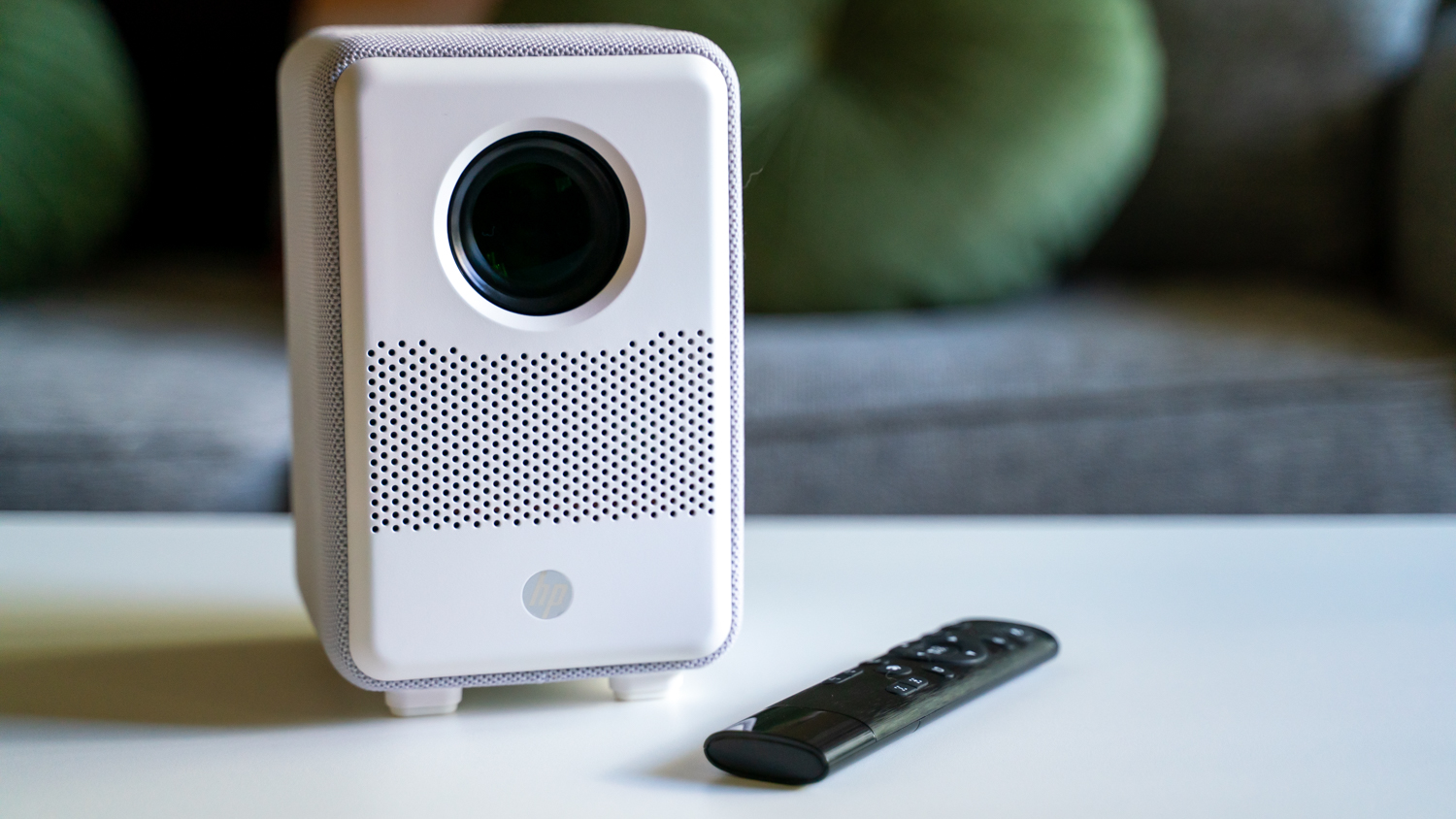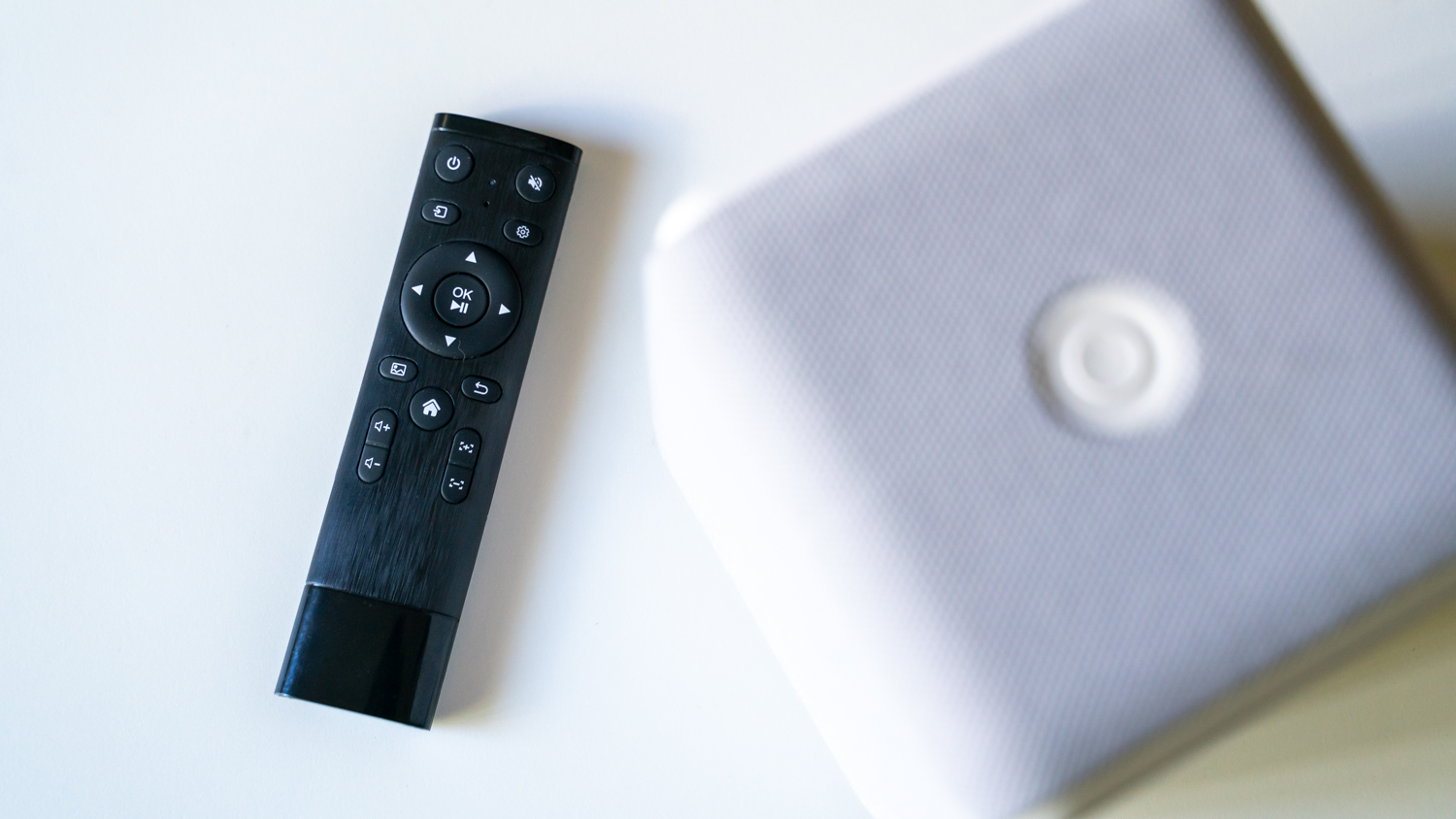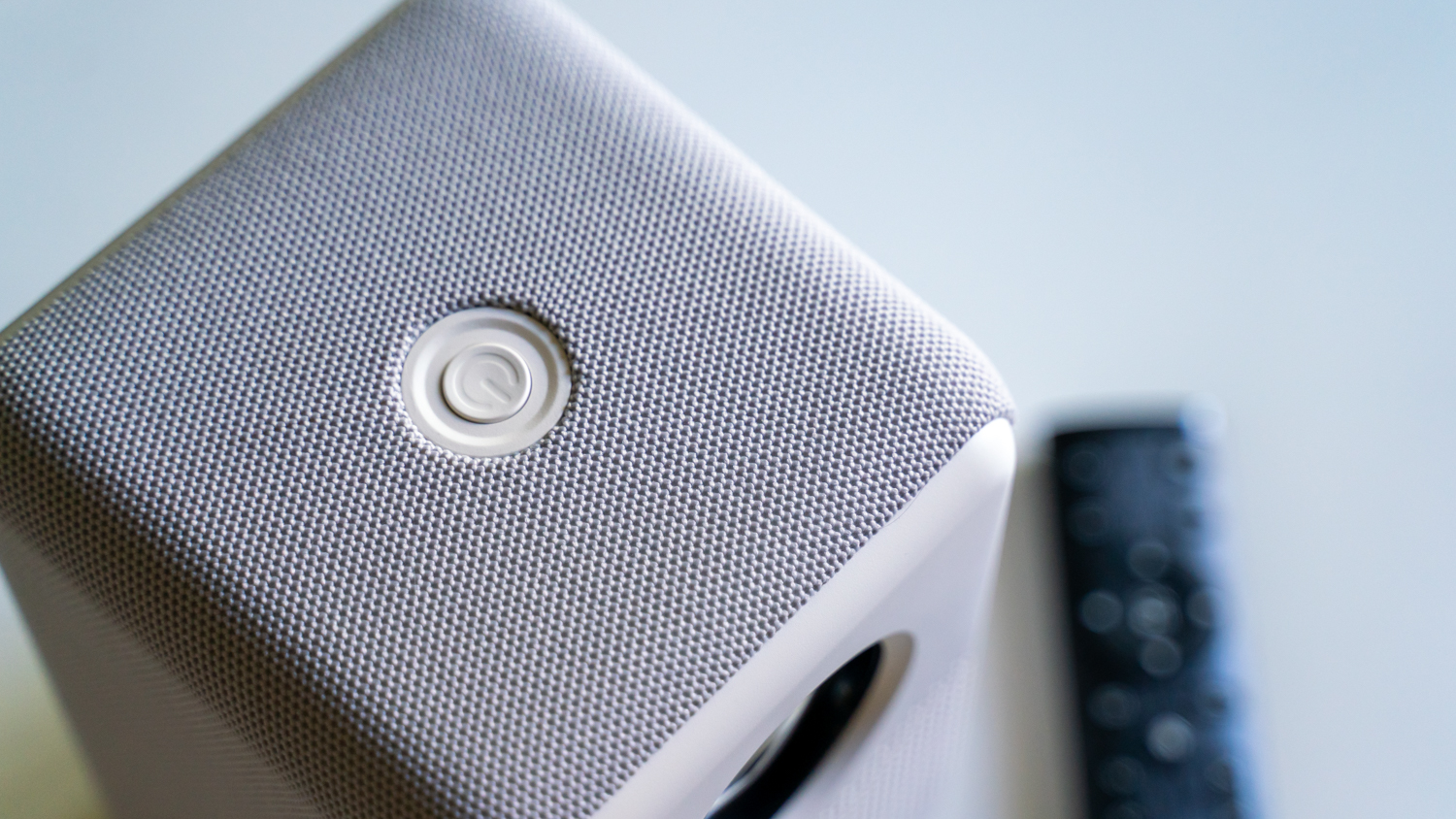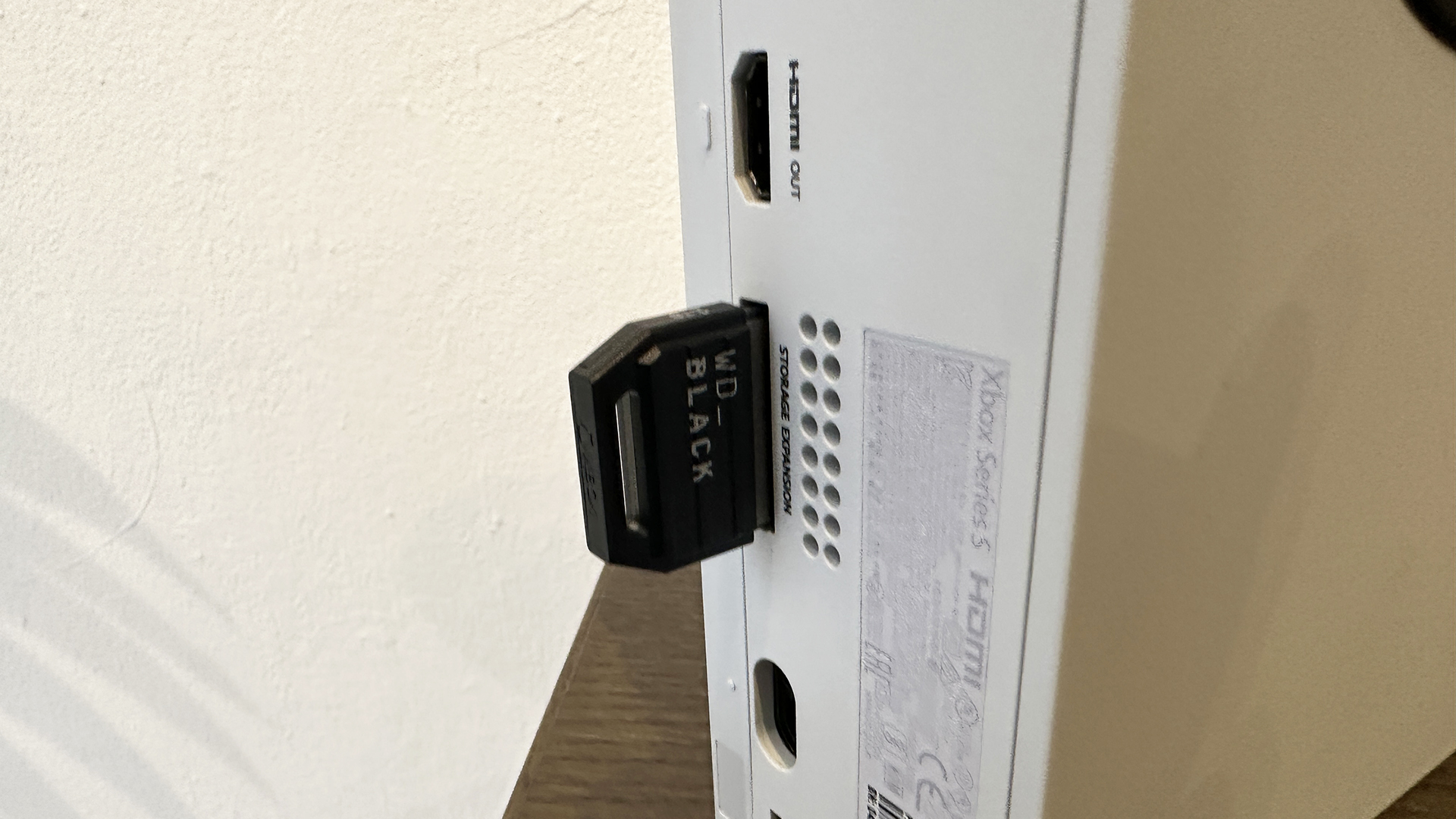HP CC200 Citizen Cinema projector review: the affordable and stripped-down option
Going for the more minimalist approach, HP’s CC200 Citizen Cinema projector isn’t feature-rich. But, bringing it back to the basics also has its perks

Smart projectors be damned. The HP CC200 Citizen Cinema projector skips the frills, opting to focus instead on picture quality, audio, and affordability. Pair it with a portable streaming stick, and you’re still paying a lot less than its rivals, making it a brilliant choice for budget-minded viewers who demand 1080p resolution.
-
+
More affordable than other portable projectors
-
+
Native 1080p resolution with great picture quality
-
+
Solid audio
-
-
No smart TV features
-
-
No keystone correction
-
-
Brightness at 200 ANSI lumens
Why you can trust T3

How does the stripped-down, no-nonsense HP CC200 Citizen Cinema projector measure against the sea of smart projectors out there?
The explosion of smart projectors has everyone rushing to get their own. Still, while brands like Xgimi and Nebula have excellent choices worth considering, the price tags on even their cheapest models have budget-minded consumers hesitating. After all, even a 720p smart portable projector can set you back over $400/£400, and at that price range, you might as well invest in a 4K TV or a laptop if you need something you can take anywhere with you.
Luckily, if you are set on getting a portable projector – whether it’s because you need a viewing solution for your camping trips or you’re trying to save space while still enjoying that large-screen experience – there are alternatives that won’t force you to break the piggy bank.
That’s the charm (and possibly even brilliance) of the HP CC200 Citizen Cinema projector. HP forgoes all the features that make a projector expensive – like the smart TV features – and sticks to the basics so you can enjoy that coveted 1080p projector viewing without the high price. So even though you have to invest in a streaming stick to stream content, you’re still spending much less than a lower-resolution smart projector.
That makes the HP CC200 Citizen Cinema the best value proposition if you want to step into the realm of portable projectors. I, for one, am here for it.
I used the HP CC200 over a couple of weeks to assess its performance in my regular projector set up. To read more about how T3 reviews products, see our how we test page.

HP CC200 Citizen Cinema projector review: price and release date
Released in February 2021, the HP CC200 Citizen Cinema projector may not be one of the latest projector releases, but it’s still only a little more than a year old. It’s also one of the best value portable projectors out there, with its asking price of $249 or about £200 / AU$360.
That’s cheap considering that the Xgimi MoGo Pro+ will set you back a little more than double the price at $699 / £589. Even the Nebula Capsule, which comes with a 720p resolution and 100 ANSI lumens, is still slightly more expensive at $299 / £339 / AU$799.
The HP CC200 doesn’t have streaming capabilities built-in, but even if you have to purchase a new streaming stick, you’re still spending much less. Something like the Chromecast with Google TV is only $49 / £59 / AU$99, while the Roku Streaming Stick is just $49 / £49.
However, at the time of writing, availability of the HP CC200 is limited in the UK and Australia. On the bright side, it’s readily available at the biggest online retailers in the US.

HP CC200 Citizen Cinema projector review: setup
Setting up the HP CC200 Citizen Cinema projector is so easy, it’s really a no-brainer. Remember that this is a simple projector with an uncomplicated user interface and no smart features. So, even if you haven’t used a projector in your life ever, you’ll hardly break a sweat. In fact, the hardest part might be finding a good spot to put it or mount it on, which isn’t even hard at all.
Since there are no smart TV features, you’re not even required to connect it to the internet, sign into your Android TV account, download your favorite streaming app, etc. That part comes if and when you plug in a new streaming stick to its HDMI port in the back – though technically, that’s you setting up the streaming stick, not the projector.
Even the settings menu is simple, straightforward, and easy to navigate. The main options come in large, descriptive icons and only give you a handful of settings. Under the “Image” setting, for example, you’ll be asked to choose between several presets or set your own under “User,” which allows you to customize contrast, brightness, color, sharpness, and tone.
The only thing that’s tricky here is that, because you can’t really connect the projector to the internet, any software upgrades must be done manually and using a USB flash drive. That’s something I don’t mind as much, since you really only have to do it every few months or so when there is an available update.
What I do mind, however, is the missing keystone correction. Neither auto keystone correction nor manual adjustments are available, which means that you’re not going to have perfectly set projected image. It’s not too bad, however. And, if someone as particular about symmetry as I am can forgive it, the rest of the projector-shopping crowd can as well.
For the sweet projected image spot, I recommend setting this up seven feet away from your wall or screen. That gives you that crisp and sharp picture quality and an 80-inch projected display, due to its 1.2:1 throw-ratio lens.
However, if that isn’t possible, you should get away with setting it up further back, like I did. The wall I use to test projectors on is more or less 13 feet away from the shelf where I typically set them on, and between those two points is my bed. So, I really didn’t have the choice, especially since setting it up on the bed meant there was all that porous surface to suck up all the heat coming out of its vents. I just made sure to make the necessary focusing adjustments, which can be done using the focus buttons on the remote.

HP CC200 Citizen Cinema Projector review: design
I appreciate what HP did here in terms of design. The HP CC200 Citizen Cinema projector is beautiful and clean and minimalist, with a classic look that allows it to fit in just about anywhere in your home. I also appreciate the soft to touch mesh fabric over the speakers as it adds a touch of elegance to a modern piece of kit.
At 128 x 136 x 203 mm, this is a portable projector – perhaps not the most compact and not ideal for air travel when you’re limited on luggage space, but portable enough to bring with you on road trips, camping trips, and even train rides. It feels pretty solid as well, if not really rugged, and boasts a 20,000-hour operational life rating. The only thing I would be concerned about is its large lens, which doesn’t come with its own cover. Because the projector doesn’t come with its own carrying case, I would invest in one to protect that lens and prevent scratches.
There are air vents in the front, back and on the underside, which has three padded feet to allow circulation (as well as offer better surface grippage). Hot air mostly blows from the back, however, so be sure to leave a lot of space for it to escape. If you’re planning on setting this right up against the wall, I would rethink that as it does get pretty warm.
Speaking of the back, there is one HDMI port, two USB ports, and one 3.5mm audio jack, so while there might not be Wi-Fi or Bluetooth connectivity, there are several ways for you to connect your devices, whether it’s a streaming stick, a laptop, or a speaker system.
Not that you’ll be needing an extra set of pipes anyway, as it does come with two 3W speakers pumping out audio through its right and left, fabric-covered side panels. And, they’re plenty powerful.
Finally, there is a power button set right smack in the middle of its top panel for easy access. Not that you’d be using it much since the projector does come with a remote.

HP CC200 Citizen Cinema projector review: features
As I said, the HP CC200 Citizen Cinema projector has more of a back-to-basics approach, and perhaps its biggest unique feature is that it utilizes a projected image diffusion technology that’s supposed to offer visual comfort without fatigue over long-term viewing. I’m not quite sure what that means exactly, as I don’t really feel that eye fatigue from other much brighter projectors.
I do want to mention the remote. It isn’t the most intuitive, as some of the buttons do not feel like they're in the right spot. The back button, for example, is just underneath the navigation buttons to the right, instead of on the left where it’s easier to access. It might take you a hot minute to get used to the format.
On the plus side, it comes with all these fun shortcuts like the image button that gives you quick access to the picture settings and the focus buttons so you can adjust the lens focus without having to go through the menu.

HP CC200 Citizen Cinema projector review: performance
Because it is stripped down, there really isn’t much for its processor to tackle. Any streaming app you want to run is being handled by your streaming stick’s chip, after all. That means that the HP CC200 Citizen Cinema projector is pretty snappy in performance. It wakes quicker than many of the pricier projectors I’ve tested, and turns off quicker as well – though you do have to press the power button twice to do so.
The only thing is that it can get pretty loud, even when it’s just sitting there not doing anything. Turn it on, and immediately those fans will start blowing hard. It gets pretty warm in the back as well, warm enough that you’ll feel it if you’re in the immediate vicinity. The consolation here is that it’s not loud enough to overpower the speakers – or is it because the speakers are too powerful to be overcome?
Those two 3W speakers are surprisingly potent that at 50% volume, you’ll start to worry about disturbing your neighbors at night if you live in an apartment building. They’re not just loud, either. They deliver decent sound quality, if just a little hollow and not as rich. It might be missing a bit of its mid-range frequencies, but the dialogue is crisp and clear, which matters a lot when you’re watching movies and shows. There’s decent bass presence as well, and even the tiniest semblance of a rumble.
I tested this with the new Star Trek: Strange New Worlds series, and very much enjoyed the experience – even more so when I switched the sound profile to “Movie,” which boosts the bass while keeping the high frequencies up so that the dialogue isn’t being overpowered by the lows.
Since these speakers are side-firing, sitting behind the projector while watching means you’re not getting the full blast. Funny enough, that isn’t the case when you’re sitting in front of it.
The picture quality is excellent as well, sharp and clean even when it’s set up farther than seven feet away and you have a 100-inch 1080p projected display. The 200 ANSI lumen brightness might bother some, especially because the dynamic range isn’t really all that wide. Adjust its brightness level to over 75%, and you’re getting a lot of overblown highlights and losing a lot of detail. Stick to around 60% brightness, however, and the colors are vibrant – even if it might be slightly hard to see during scenes when there’s a lot of shadow.
That low maximum brightness also means that this isn’t ideal for daytime use. Even in a slightly darker, north-facing room with just a single window, it’s not enjoyable to use during the day. That said, it’s more than good enough to enjoy shows or movies at night with all the lights turned off.

HP CC200 Citizen Cinema projector review: verdict
Does the HP CC200 Citizen Cinema projector’s lack of streaming features make it hard to recommend, especially since smart projectors are all the rage right now? Hardly! On the contrary, it only allows it to be a more compelling purchase especially for budget-minded consumers and folks who don’t really need a fancy projector.
Stripping it of all these fancy features allowed HP to focus on performance as well as affordability, which in turn makes it stand out in a sea of pricey smart projectors. Even with an extra streaming stick purchase, which you really don’t have to do if you’ve got a laptop or have a wealth of content you can upload on a USB flash drive, it still costs less than a smart projector with lower resolution and subpar performance.
That makes it a brilliant contender in the portable projector market.
HP CC200 Citizen Cinema projector review: also consider
If you still prefer the smart feature built-in, however, know that there are several great options. My current favorite, which I recently tested, is the Xgimi Halo+. It’s a near-perfect projector boasting a brilliant performance and a brilliant picture quality to match. It is a bit on the pricey end, however, at $849 / £749 / AU$1,499.
For something slightly more affordable, the Nebula by Anker Solar is only $499 / £450 / AU$750. It boasts a 120-inch 1080p image projection and is a bit brighter than the HP CC200, which makes it a great budget-friendly choice if you need that built-in streaming perk.
Sign up to the T3 newsletter for smarter living straight to your inbox
Get all the latest news, reviews, deals and buying guides on gorgeous tech, home and active products from the T3 experts
Michelle Rae Uy is a tech and travel journalist, editor and photographer with a bad case of wanderlust. She is a regular contributor for IGN, TechRadar and Business Insider, and has contributed to Thrillist, Paste Magazine, Nylon, Fodor's and Steve's Digicams. Living mainly in California with her adorable cats, she splits her time between Los Angeles, London and the rest of the world.
-
 New Casio G-Shock is half sci-fi nightmare, half Y2K chic
New Casio G-Shock is half sci-fi nightmare, half Y2K chicI hate how much I love this
By Sam Cross Published
-
 Apple's Severance computer may have been a joke, but the keyboard is coming for real
Apple's Severance computer may have been a joke, but the keyboard is coming for realTell us where we can sign up!
By Britta O'Boyle Published
-
 Xbox Series X/S storage space problems solved by a sneaky Xbox Game Pass update
Xbox Series X/S storage space problems solved by a sneaky Xbox Game Pass updateYou may never have to buy external storage again
By Rik Henderson Published